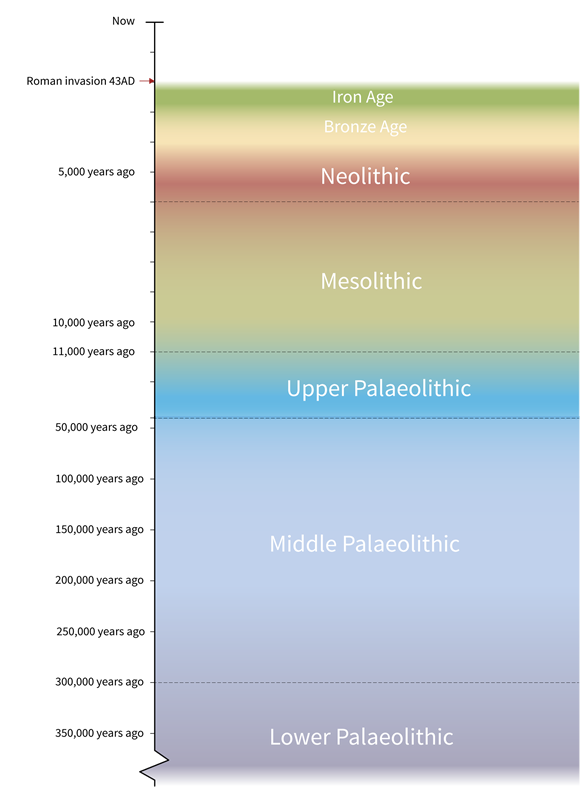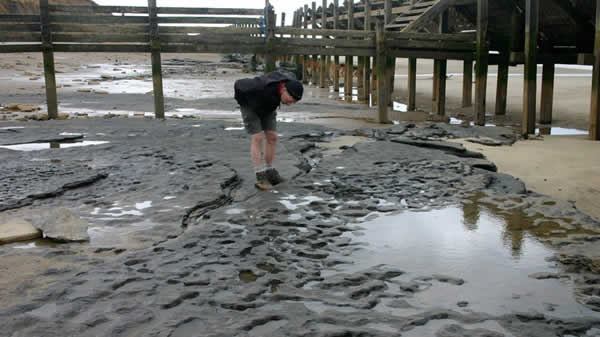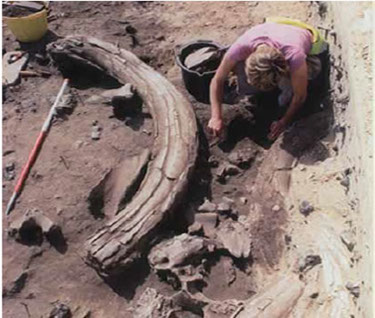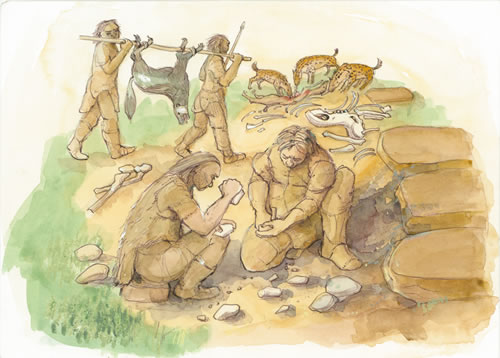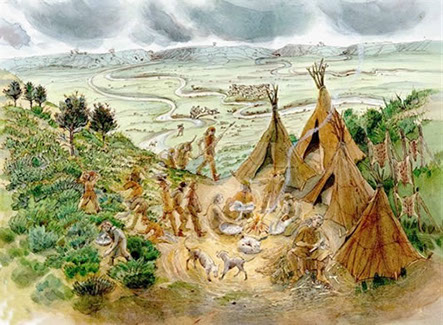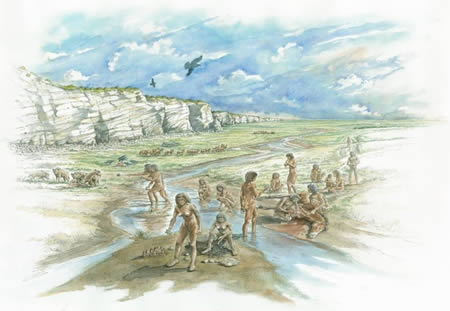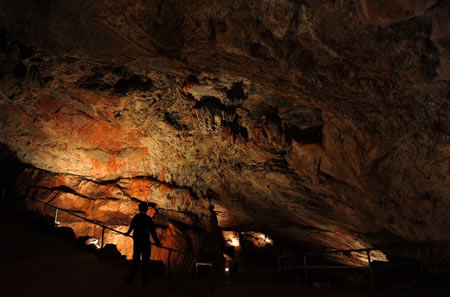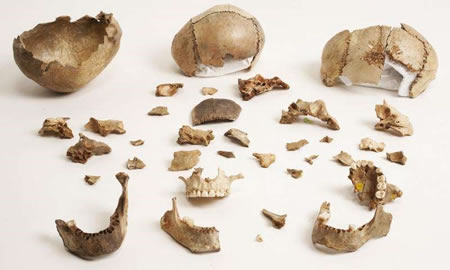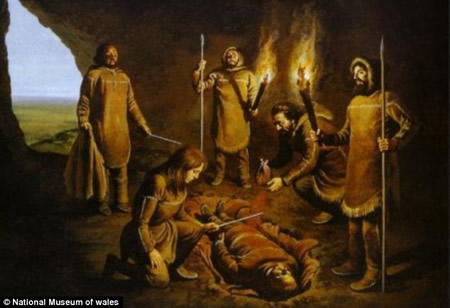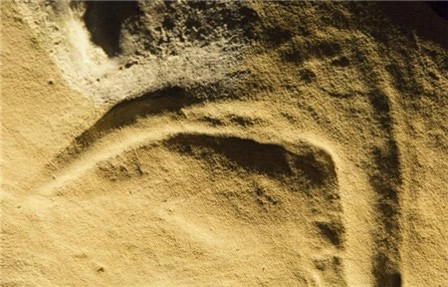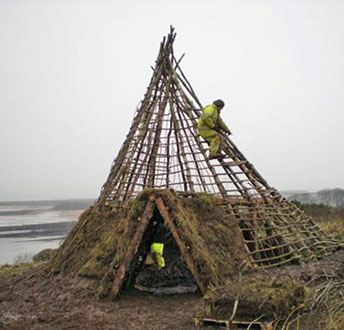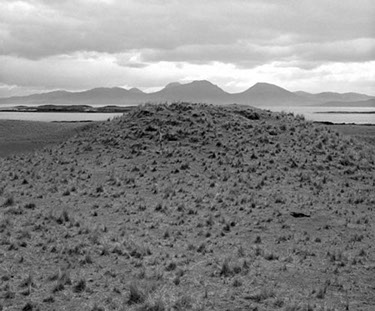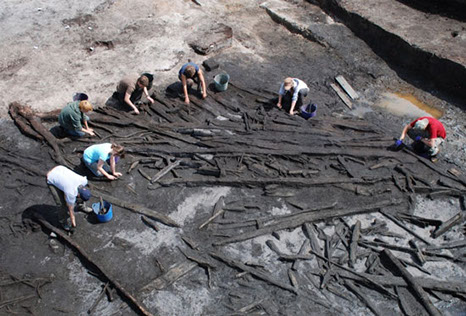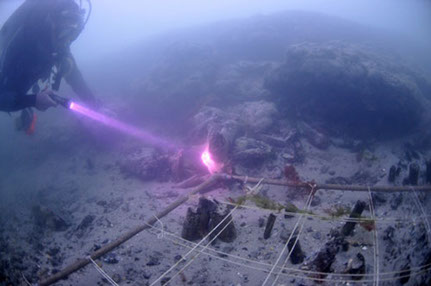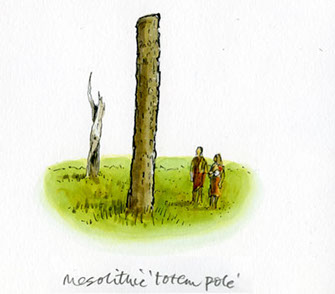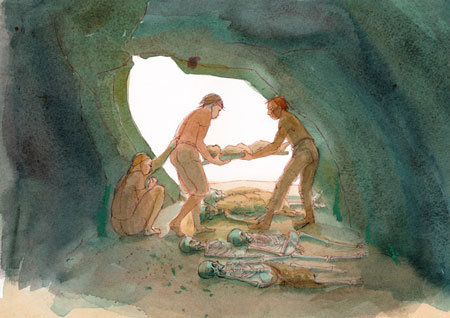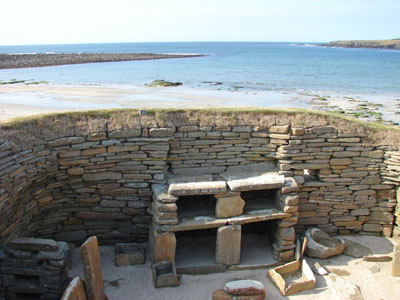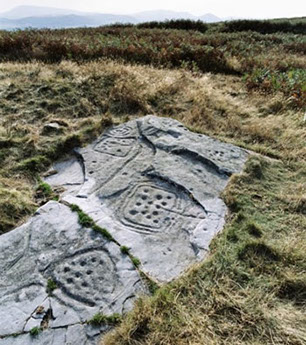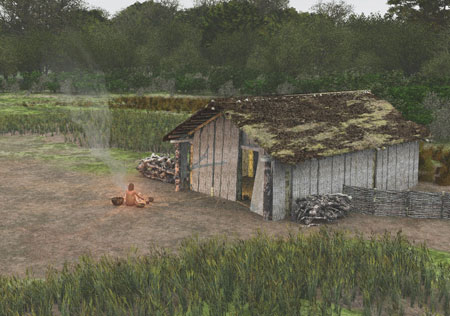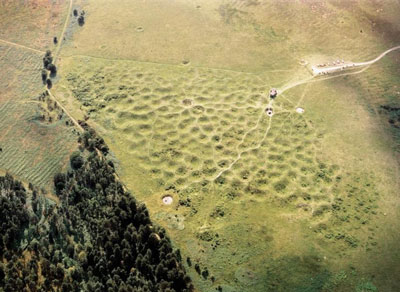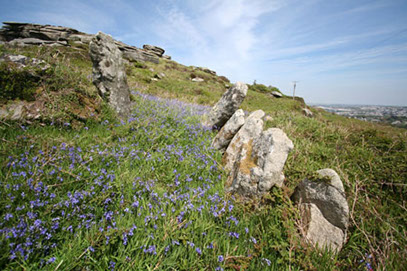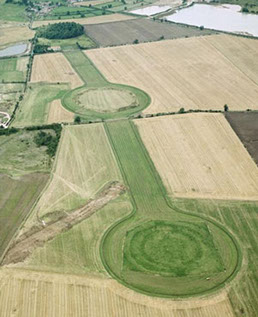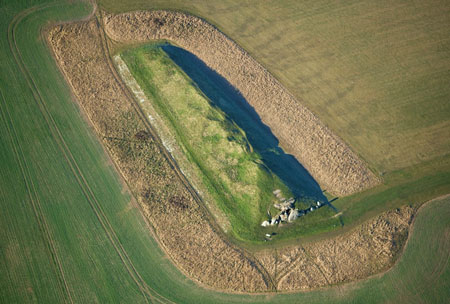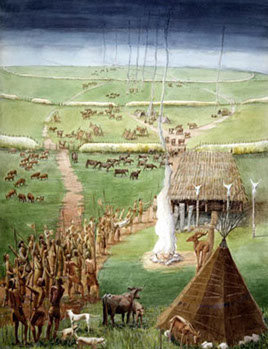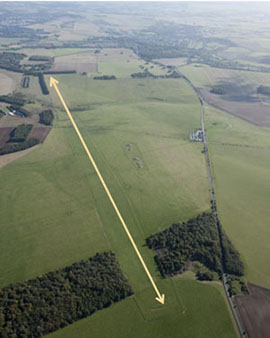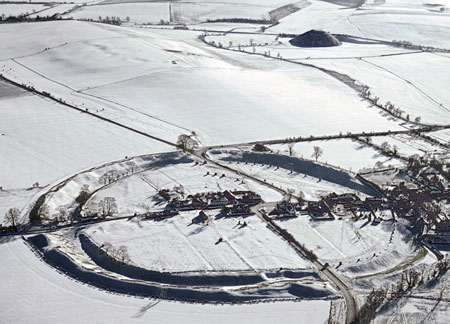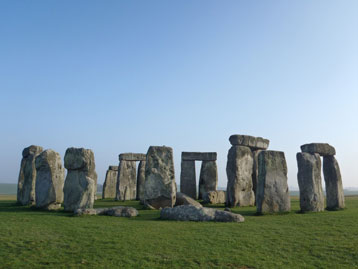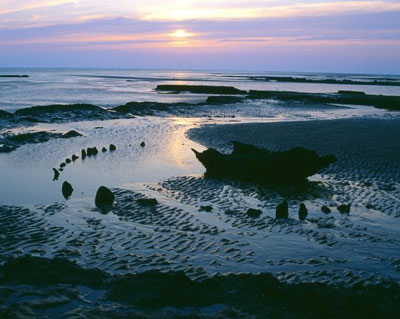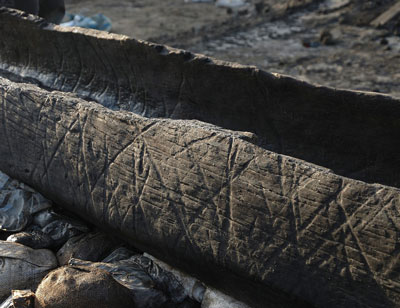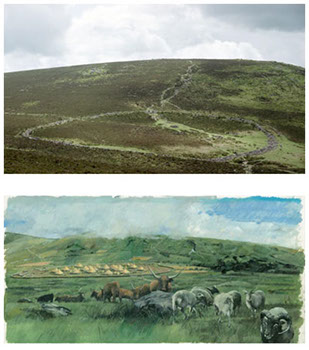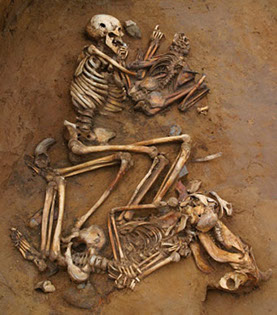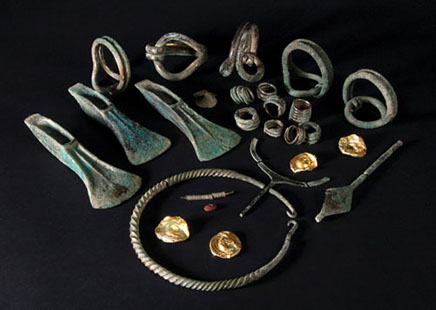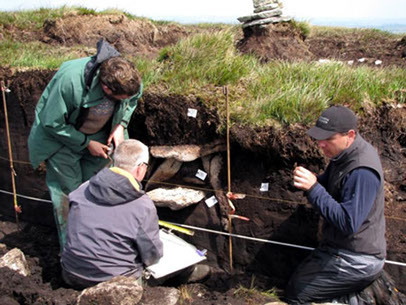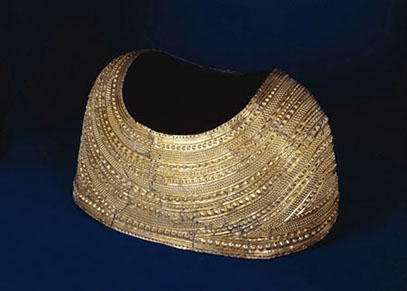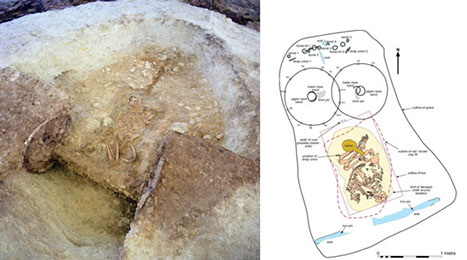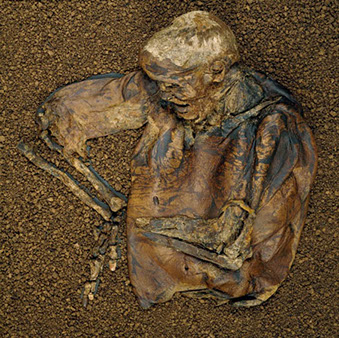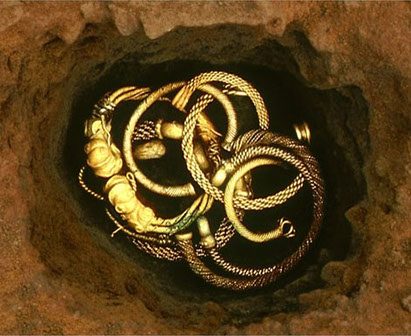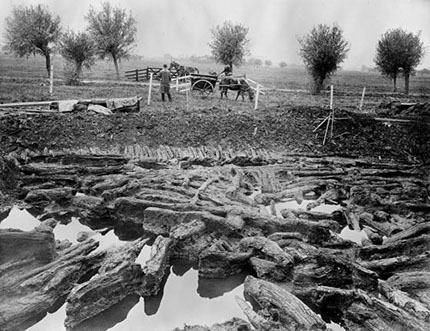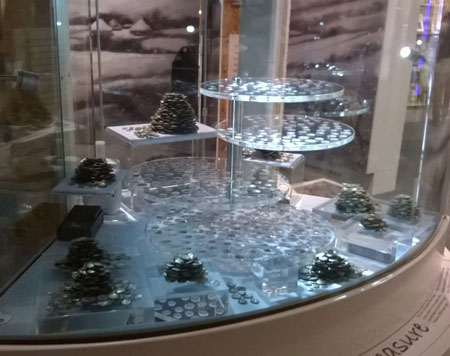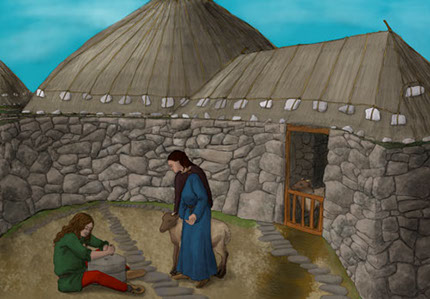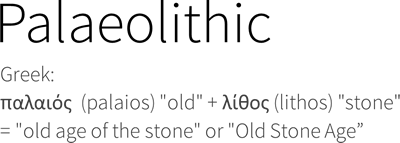
The people who lived during the Palaeolithic were nomadic hunter-gatherers who used stone tools
They have left behind no large buildings or permanent settlements. Remains from this period are very hard to find and often in caves

- Several different species of human existed at different times during the Palaeolithic, sometimes overlapping.
- The oldest species’ found in the UK are Homo Antecessor, dating from around 1 million years ago and Homo Heidelbergensis, dating from around 500,000 years ago.
- Our own species (Homo sapiens sapiens) arrived in Europe just before another human species, the Neanderthals (Homo neanderthalensis), became extinct around 30,000 years ago.

Neanderthals (Homo neanderthalensis) were early humans who lived in Europe from about 400,000 years ago until 30,000 years ago. Neanderthals would have looked different from our own species of humans, but maybe not very different! Their bones show they were short and strong, meaning they were well adapted to living during the ice age, when it was much colder than it is today.
The last Neanderthals lived in Europe at the same time as our own species (Homo sapiens).
Although they eventually died out, genetic evidence shows that we all have some Neanderthals amongst our ancestors.
Neanderthals were intelligent humans, but different from our own species.
They were capable of communicating, probably undertook ritual activities and may have produced art.
Models of a Neanderthal (left) and an early modern human (right) © Natural History Museum
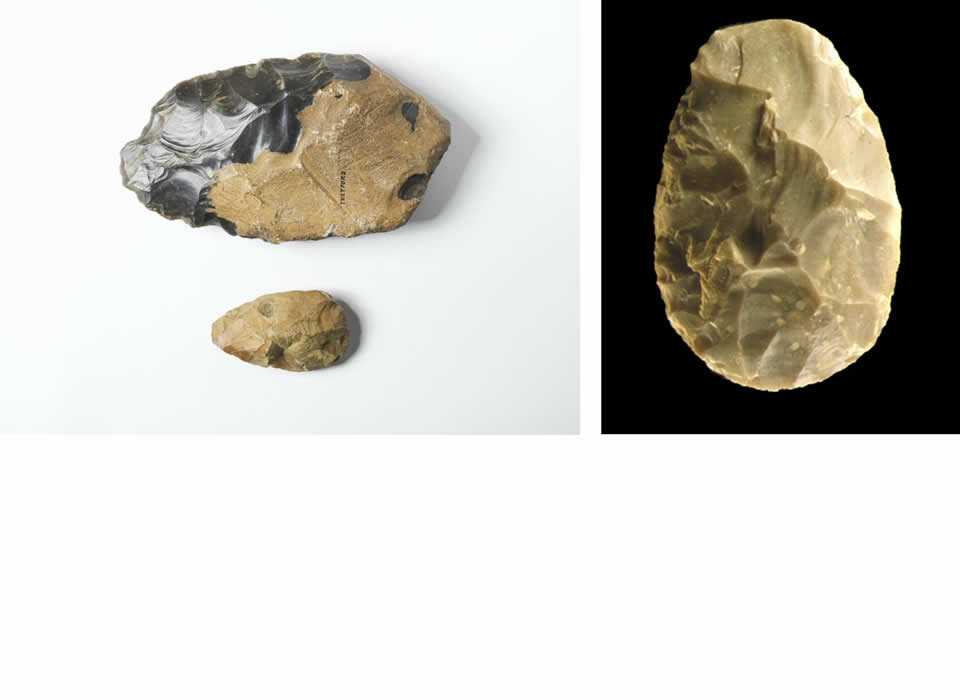
Handaxes were used in the Lower and Middle Palaeolithic by Homo heidelbergensis and Neanderthals. They would have been held in the hand rather than attached to handles, like axes today. Their sharp edges were used for chopping or cutting.
Handaxes were produced by hitting stone nodules with stone, antler or bone hammers.
This process is known as knapping. Flint was often chosen because it is easily flaked by striking (look at the ridges and the ripples on the surface of the flint in the photograph) but other types of stone were also used.
Some handaxes are very beautiful, which suggests that the other species of humans who made them were not so different from us, with values and interests beyond simply making a tool that worked.
Stone Tools:
Handaxes
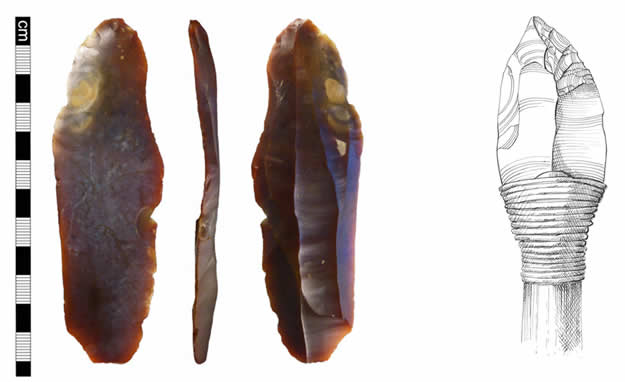
Stone Tools:
Flint Blades
Handaxes were used for half a million years but when modern humans evolved they developed new techniques of knapping stone tools.
Rather than shaping a flint nodule directly, they prepared a ‘core’ from which they could strike long narrow flakes, known as blades. These provided longer cutting edges and were suitable for attaching to handles or ‘hafts’.
Stone tools are often the only parts of very old sites to survive because they do not rot (unlike wood and other plant remains).
Stone tool study is therefore very important to archaeologists of early periods.
Microscopic analysis of cutting edges can sometimes tell us what the tools had been used for.
Palaeolithic hand axes: Artist: Alun Bull © Historic England
Palaeolithic flint handaxe from Boxgrove © AHOB
Changing geography:
Britain has not always looked as it does now. During the Palaeolithic there was a succession of cold periods called ice ages or ‘glaciations’, interspersed with warmer periods or ‘interglacials’.
As well as the climatic effects, the appearance of Britain was altered by the physical impact of the glaciers and changing sea levels linked to the expansion or melting of the ice. Not only did the plants and animals that lived here change as it became warmer and colder, but the shape of our coast and the course of our rivers have also changed.
During the Lower Palaeolithic Britain was not an island, it was connected to other European countries: France, the Netherlands, Germany and Denmark.
The area that still joined Britain to the Netherlands, Germany and Denmark is called Doggerland by archaeologists.
Happisburgh
Lynford
Beeches Pit
Creswell Crags
Swanscombe
Boxgrove
Hengistbur Head
Kent’s Cavern
Gough’s Cave
Paviland
CLICK ON A LOCATION
TO SEE MORE
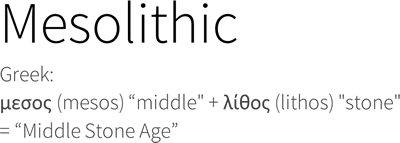
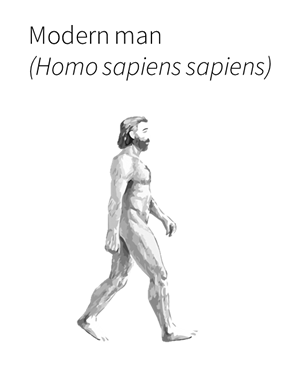
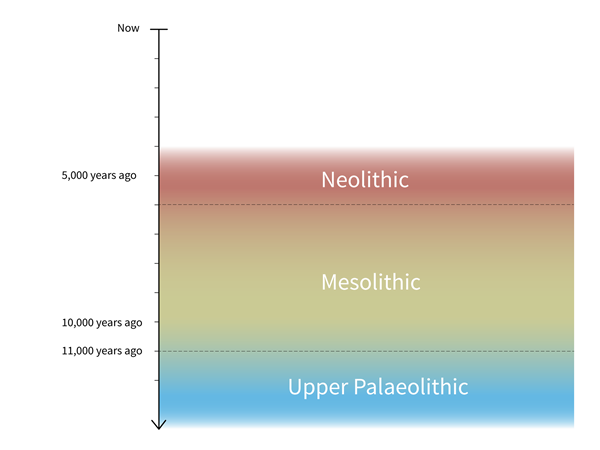
During the Mesolithic, sea levels gradually rose.
Doggerland is the name archaeologists have given to an area between Britain, the Netherlands, Germany and Denmark which is now under the North Sea.
Doggerland gradually flooded as a result of climate change and sea level rise from the melting of glaciers after the last ice age.
At the start of the Mesolithic Doggerland was a very large area, and would have been lived in by numerous groups.
The area flooded gradually, and finally disappeared about 7500 years ago.
Until that time Doggerland would have provided a connection between Britain and Europe, people would have traded and exchanged things, and might have spoken a common language.
After Britain became an island, they would have needed boats to travel to the continent and there is less evidence for contact.
It is not until the middle of the Mesolithic that Britain finally became an island, about 8000 years ago. After Britain became an island, people would have needed boats to travel to the rest of Europe. As a result archaeologists have found less evidence for contact with the continent during the rest of the Mesolithic.
This next image shows that by about 6,000 years ago the coast of Britain looked much as we would recognise it today.
A Mesolithic camp
Mesolithic people hunted wild animals, fished and gathered wild plants.
They would have moved widely, depending on when and where different resources were available. Some sites have evidence for use in particular seasons.
Mesolithic settlements vary greatly in size from small campsites used for anything from a single afternoon or a few months, to areas where large groups gathered at certain times of year.
The reconstruction drawing shows what a Mesolithic camp might have looked like.
The first evidence for houses in Britain comes from this period, but most of our archaeological evidence comes from camps, that are now marked only by scatters of stone tools.
However, these can be very informative about how old the site is and what tasks took place there.
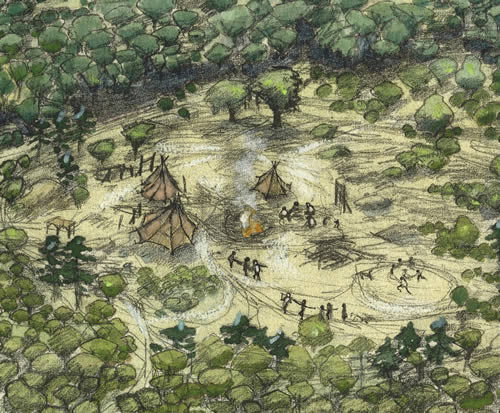
Mesolithic camp. © Historic England
Stone tools: Microliths
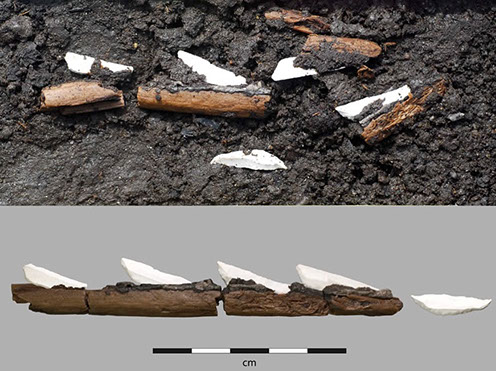
Mesolithic flint-tipped arrow from Sweden, showing how
microliths were hafted © Antiquity
The most characteristic Mesolithic stone tools are called ‘microliths’, which means ‘small stones’.
Microliths can range from a few millimetres long up to about 5cm.
They were made by knocking bits off longer flint blades and come in a range of forms, including narrow rods, triangles and crescents.
Microliths may have been used for a range of tasks, often stuck onto wooden handles using glue made from tree sap.
Archaeologists have found examples of arrowheads made from several triangular microliths stuck onto a wooden arrow shaft.
Stone tools: Axe
As well as the small microliths, Mesolithic people also needed larger stone tools, such as axes for woodworking. When the cutting edges of these axes became blunt they could quickly be resharpened by striking another flake (known as a ‘tranchet’ flake) off the edge.
Unlike earlier handaxes Mesolithic axeheads were fixed into handles made of wood. Although they were carefully shaped they were not polished like axes of the Neolithic period.
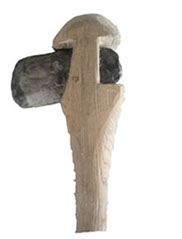
Extract from DP081187 Mesolithic tranchet stone axe. © Historic England
Bone and antler objects
Barbed points are one of the most famous Mesolithic artefact types.
They are long rods of antler or bone with ‘barbs’ (points projecting backwards from the main point) down one or both sides.
They might have been used as harpoons for fishing, or as spears for hunting large animals on the land.

Barbed bone points. © National Museum of Scotland
March Hill
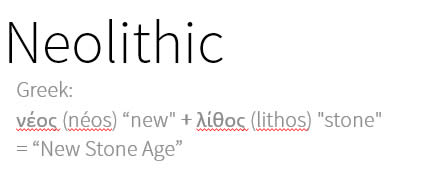
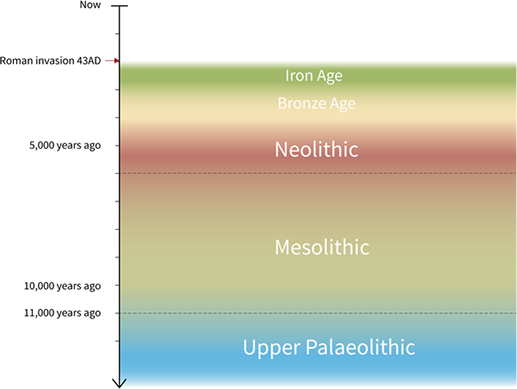
The Neolithic marks the beginning of farming in Britain, around 4000 BC, and ends with the appearance of bronze-working around 2200 BC
Howick
Oronsay
Star Carr
Bouldnor Cliff, Isle of Wight
Stonehenge
Aveline’s
Hole
CLICK ON A LOCATION
TO SEE MORE
Farming: Animals
Farming in Neolithic Britain depended mainly on livestock (cattle, sheep and pigs) and grains (wheat and barley). There were no chickens or turkeys!
All these domestic species were brought from the continent in small boats.
Archaeologists still debate how many people came over with them, and where they came from.
We know from animal bones found during excavations that in the early Neolithic cattle were the most important species.
People probably followed their herds in a nomadic fashion, not too different from Mesolithic hunter-gatherers.
In the late Neolithic pigs became more important.
In contrast to the Mesolithic, wild animals were rarely exploited, although antler was used to make picks for digging. People ate very little fish and some archaeologists believe there was a taboo because rivers were sacred.
Neolithic settlement at Durrington Walls, Wiltshire, in 2500BC.
By Peter Lorimer © Historic England. [IC095_082]
It is the first time that people start deliberately planting and harvesting crops. However, growing crops appears to have been less important in the Neolithic than herding animals, though there are a few sites where large quantities of grain have been found.
People also ate a lot of wild hazelnuts, as they had done in the Mesolithic.
Eating cereals required a lot of hard work; ploughing and planting seeds, harvesting the grains, cleaning and processing them to make flour.
People needed new tools for this such as sickles and grinding stones.
They may also have made beer for the first time.
Farming: Plants
Neolithic grain production © Historic England Photo Library Ref:J930178
New technologies
As well as the first evidence for farming, in the form of domesticated plants and animals, people also made pottery for the first time.
Although they continued to use stone tools, they had new techniques for producing axes (polished stone).
We have more evidence for houses in the Neolithic, as well as new types of site used for burials, gatherings and ceremonies, which archaeologists refer to as ‘monuments’.
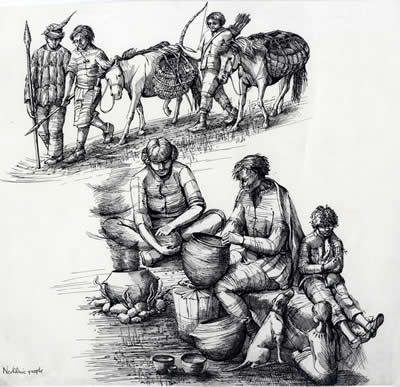
Pottery
People started using pottery for the first time in the Neolithic. The pots were handmade (not on wheels) and fired in simple pits or bonfires.
Bits of stone or shell were added to strengthen the clay and help stop it breaking when it was fired. These can help archaeologists tell where pottery came from.
Early pottery was not very strong and was easily broken but it meant that people could cook and store food in different ways. Microscopic residues extracted from pottery fragments show that many pots contained dairy products.
Neolithic pottery was often decorated, which might have been an important way of showing which groups people belonged to.
Sometimes pottery fragments and other rubbish were disposed of in special ways, usually in small pits.
These traditions reflected important beliefs which are very different from modern treatment of rubbish.
Even broken pottery might have been powerful or magical in the Neolithic world.
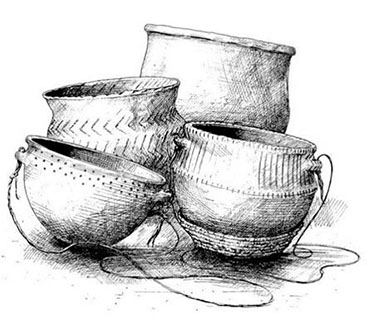
A reconstruction drawing of Neolithic pottery from Windmill Hill. © Historic England.
Stone tools: Polished axes
Neolithic people made stone and flint axes in a different way to Mesolithic people.
After using hammer stones to knap a nodule and produce a rough shape, the axes were ground or polished to produce a sharp edge and the smooth shape shown here.
These axes were mounted onto wooden handles and could be used for chopping and cutting.
They were also impressive objects that might have been important for the status of people in the past.
To have one of these axes might have made other people think you were important, powerful, brave or wise.
Stone axes were traded widely across Britain, which also shows how important they were.
Some are so delicate they must never have been used.
In these cases, the practical usefulness of these objects might have been less important than using them as status symbols.
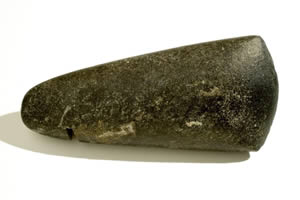
Neolithic polished stone axe. © Historic England
Woodworking
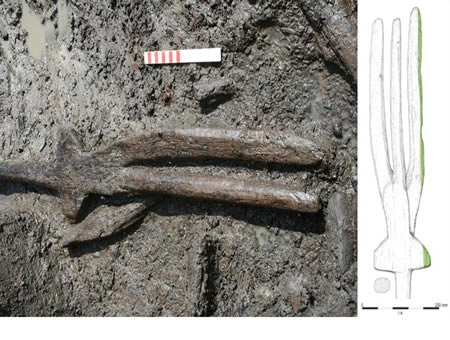
As well as pottery and stone, Neolithic people would have made objects out of wood and other organic materials, but these rarely survive.
Examples of Neolithic woodworking have been found at Etton causewayed enclosure near Peterborough, including an axe haft and a bowl.
There are also a number of wooden finds from the Thames including a club from Chelsea (which looks like a modern rounders bat) and a small statue of a human figure from Dagenham.
Two finds made recently near Carlisle, Cumbria, are very rare wooden ‘tridents’ found in an ancient river channel.
The tridents are 6000 years old. They were made from planks of oak wood, and with the handles (which are not shown in the image) they would have been nearly 2m long.
Archaeologists are not sure what the tridents were for.
On the left is a picture of the trident in the ground, on the right is a reconstruction Detail © Oxford Archaeology North
Horton


The Bronze Age dates from the first appearance of bronze in around 2200 BC to the introduction of iron around 800 BC.
Bronze is a mixture of copper and tin, making it much harder and more useful than the pure copper found with the Amesbury Archer.
Grimes Graves
The Sweet Track
Carn Brea
Thornborough
Langdale
Doddington Moor
Skara Brae
West Kennet long barrow
Windmill Hill causewayed enclosure
Stonehenge Cursus
Avebury and Silbury Hill
Durrington Walls
Stonehenge
The Amesbury Archer
CLICK ON A LOCATION
TO SEE MORE
Bronze Age Metalwork
Metal objects were usually cast in moulds. They include tools (especially axes), weapons and ornaments. Bronze axes look very different to the stone axes produced in the Mesolithic and Neolithic and were much sharper than stone.
Metal axes were given their shape by making a mould and then pouring molten metal into it.
There were many different shapes of axe head and different ways of fixing them to wooden handles. As well as axes, a range of other items were produced in bronze, including tools (chisels, sickles), weapons (swords, spearheads) and ornaments (pins, rings).
The Great Orme, Llandudno, is the site of a 4000-year-old copper mine. Copper ore (rock rich in metal minerals) was collected on the surface and in deep underground mine shafts. The mines covered an area of at least 240m by 130m, and were up to 70m deep. 6.5km of Bronze Age tunnels have been identified so far. Over 33,000 bone tools and 2400 stone hammers used for mining have been recovered. Conditions would have been very unpleasant in the narrow tunnels.
Britain was also one of the only sources of tin ore in north-west Europe. Tin is essential to make bronze, and is found in Cornwall and Devon. It would have been traded across Europe in the Bronze Age.
Bronze Age Pottery
Lots of different types of pottery were used throughout the Bronze Age.
One of the most important – and the earliest - is Beaker pottery, which is usually highly decorated. Beakers are so-called because they are thought to have been used for drinking, possibly beer!
This type of pottery first appeared in the Late Neolithic period and is found across much of western Europe, including in the burial of the Amesbury Archer.
This suggests trade or movement of people across Europe.
In Bronze Age Britain local styles of Beaker pottery developed. Archaeologists mainly find ‘Beaker’ pots in graves, rather than in places where people lived everyday.
Later on, Bronze Age people used other types of pottery, which archaeologists have named after either their shapes (e.g. Collared Urns), what they may have been used for (e.g. Food Vessels), or the places they were discovered (e.g. Deverel-Rimbury ware).
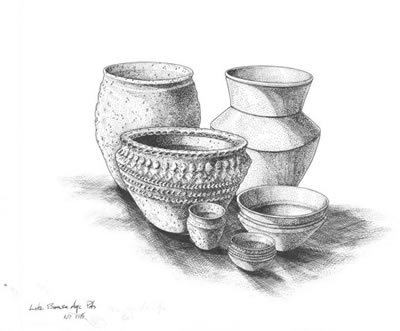

In the early Bronze Age human burials were often covered by large circular mounds of earth or stone, known as round barrows.
Many barrows are surrounded by a ditch and in some cases where the mounds have been destroyed by modern ploughing these ring-ditches are all that survive.
Round barrows are very common across many parts of Britain. For example, there are over 350 in the landscape around Stonehenge.
At first most of the people buried under round barrows were buried as whole bodies in a crouched position, sometimes in a coffin. Over time cremation became more common, with the ashes being collected and put in a pottery urn, which was often placed upside down within the barrow.
Round Barrows
Farming and fields
The origins of our countryside of villages, fields, hedgerows and trackways lie in the middle part of the Bronze Age, around 1500 BC.
This is when field systems were laid out and the first roundhouses built.
In many areas these small Bronze Age fields have long since been replaced but in some places prehistoric field patterns still survive.
At Halshanger Common, Devon, remains of Bronze Age fields are preserved, with banks running in long parallel lines across the photographs.
The individual fields are then divided within these strips, so they look a bit like brickwork in a wall.
Within the area of the fields on Halshanger Common are seven settlements (villages), the largest with at least 15 stone roundhouses, a type of house typical of the late Bronze Age and Iron Age (see Grimspound).
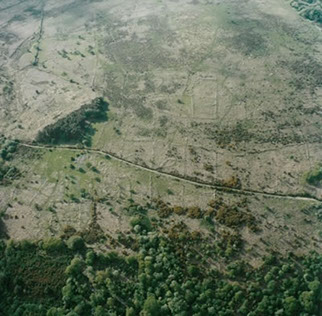
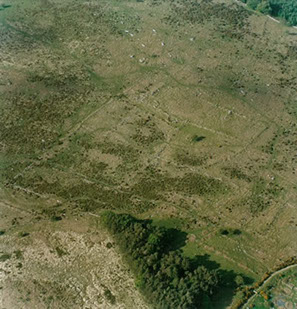
Mold


Iron tools and weapons are found for the first time, while gold and other metals continued to be used for jewellery and ornaments.
Towards the end of the period coins started to be made.
People lived in roundhouses like those of the Bronze Age but settlements became bigger.
Some sites have evidence for defence, such as hillforts and brochs.
Seahenge
Must Farm and Flag Fen
Dover
Cliffs End Farm
Near Lewes
Whitehorse Hill
Grimspound
CLICK ON A LOCATION
TO SEE MORE
Broch of Gurness

Powered by Candle Digital
Yorkshire
Lindow Moss
Snettisham
Hallaton
Battersea
Maiden Castle
Glastonbury Lake Village
Carn Euny
Oppida
By the end of the Iron Age Britain was divided into a number of tribal territories. The first Britons whose names we know were tribal rulers at this time, their names recorded by Roman writers or on coins.
After 100 BC southern Britain increasingly came under the influence of the Roman Empire. New types of object started to appear, including wheel-made pottery and coins. There were also new kinds of settlements, especially large ones known as ‘oppida’ (singly ‘oppidum’), which were often enclosed by large ditches.
Examples of oppida include Camulodunum (Colchester) in Essex, Silchester in Hampshire and Stanwick in Yorkshire. They often formed the ‘capitals’ of tribal territories: late Iron Age Britain was divided between a number of different tribes including the Brigantes at Stanwick, the Atrebates at Silchester and the Catuvellauni at Colchester.
Oppida were important trading centres at a time when links to the continent were developing. The British tribal leaders may have enhanced their status by acquiring exotic goods from the Roman Empire.
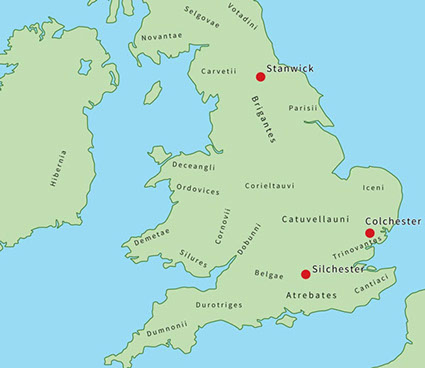
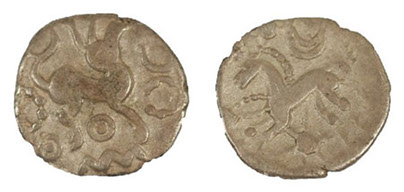
A typical Iron Age coin, showing an ear of corn on one side and a horse on the other.
CLICK ON A LOCATION
TO SEE MORE
The ‘Stone Age’ is an extremely long period of time.
It is divided into 3 periods:
- Palaeolithic (Old Stone Age)
- Mesolithic (Middle Stone Age)
- Neolithic (New Stone Age)
The Palaeolithic or Old Stone Age alone goes back nearly 1 million years. It is also divided into three parts:
- Lower Palaeolithic
(before about 300,000 years ago) - Middle Palaeolithic
(300,000 to 40,000 years ago) - Upper Palaeolithic
(40,000 to 11,000 years ago)
This timeline shows the entirety of British Prehistory, which finishes with the Roman invasion.
Everything else since then lasts just 2,000 years.

Prehistory Timeline

